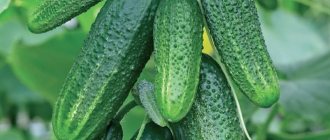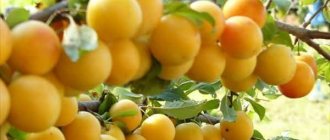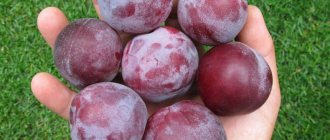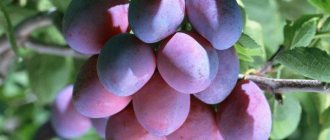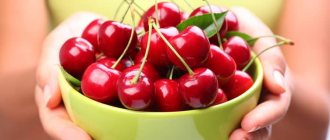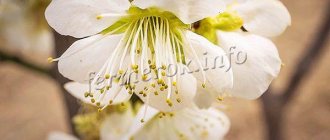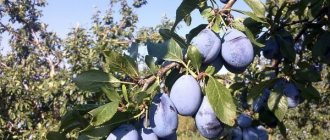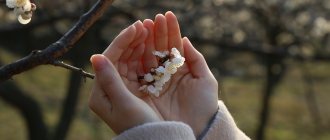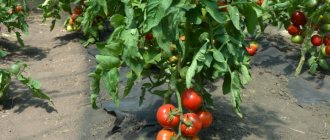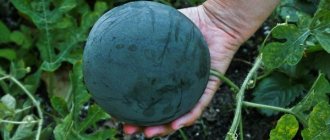According to gardeners, plum is one of the most common and popular stone fruit crops. Tasty and healthy fruits, as well as the tree’s ease of care, make it popular among amateur gardeners.
However, the climate of the Moscow region does not allow the cultivation of all currently existing varieties of plums. This is explained by the fact that for many of them, the flowering period often coincides with the last spring frost in this region. In this case, the fruit buds freeze, which cannot but affect the harvest. We will present you the best varieties of plums for the Moscow region with photos and descriptions. Perhaps this will help you make your choice when purchasing seedlings.
Features of growing plums in the Moscow region
Plum belongs to the Rosaceae family, which includes about two hundred and fifty species. Most of them are successfully cultivated in gardens and summer cottages. Home plums are grown in our country. The tree lives on average 20-25 years and grows up to twelve meters in height. The undeniable advantages of the plum include its ability to actively grow and develop on almost any soil.
The climate in the Moscow region is slightly milder than in more northern or eastern regions. However, winter here is not just cold, but also with sudden temperature changes. That is why the selected variety must be resistant to cold.
Features of self-fertile varieties
Today we will present to you self-fertile plum varieties for the Moscow region, but first a few words about what the term “self-fertility” means. This is the ability of a plant to self-pollinate without the participation of bees and the proximity of trees of a related species.
When cross-pollinated, such trees produce a significantly larger harvest, since in this case both their own pollen and the pollen of neighboring trees are the pollinator. Under the influence of climatic conditions, partial self-fertility occurs, which is characterized by lower yield.
Characteristics of plum
All plums represent a tree obtained from the seed.
Basically, plums grow up to 3-6 meters and have a rounded crown. Skeletal branches are located at an acute angle to the trunk; the shape of the tree depends on the variety. There are columnar plants - the result of a natural mutation, fixed by selection. Compact and productive, they claim to be the best plum varieties for the Moscow region. Plum fruits, depending on the variety, range in color from green to dark purple. The size of cream varies from 20 to 150 grams. There are self-fertile varieties, but any of them will give greater yields with cross-pollination. The harvest ripens in the Moscow region from July to mid-September, depending on the variety.
All plum varieties are divided according to their use:
- edible plums, distinguished by a pleasant taste, almost all of them are obtained as a result of selection;
- Wild plum fruits, which have no commercial value, are considered conditionally edible;
- Decorative plums are used in landscape design; their flowering and the shape of the tree and leaf create a unique landscape.
Let's consider the best varieties of plums for the Moscow region, which are in demand among amateurs and professionals.
The central region, which includes the Moscow region, is characterized by moderately cold winters, with frequent and sharp temperature fluctuations. Its climatic features require careful selection of plum varieties for cultivation, since the flowering period of these trees often coincides with return frosts.
Yellow self-fertile plum
Self-fertile varieties of plums are characterized by consistently high yields with minimal care. Self-fertility is the ability of plum trees to pollinate without the participation of bees or pollen from other plum varieties. They use their own pollen as a pollinator. The main advantages of this variety are:
- guaranteed yield;
- no need for pollination by insects;
- the versatility of the fruit - they are used for table consumption and preparations.
Attention! A feature of self-fertile species, proven in the process of cultivation, is increased productivity with cross-pollination.
In order for this variety to bear fruit for a long time and successfully, it is necessary to choose the right place for planting. It should be a sunny, windless place where snow and water do not linger - preferably on a hill.
It is recommended to plant plums in well-lit places
The ability for self-fertility in plum trees can vary in degree, which allows us to distinguish a category of so-called partially self-fertile plums, the yield of which is usually slightly lower. To keep it tall, they need proximity to other pollinating trees.
Particularly loved by gardeners are the yellow-fruited varieties, the fruits of which have a very pleasant dessert taste. They are predominantly small in size, round in shape, have a faint peritoneal suture and are golden-yellow in color. There are also varieties with a red barrel, a pinkish or greenish tint, and a whitish waxy coating.
Requirements for soil and planting site
Self-fertile varieties of plums for the Moscow region require special planting conditions for abundant and long fruiting. They should not be planted in low-lying areas where snow and water stagnate. The tree will feel more comfortable on sunny slopes from which the snow quickly melts, because then the tree’s root system does not suffer from excess moisture. If there is no natural hill on the site, create an artificial one.
After choosing a place for planting, it must be properly prepared. Usually this work is carried out in the fall. Despite the fact that this is a rather unpretentious plant - the plum is self-fertile, varieties for the Moscow region require fertilizing the soil. For 1 sq. m of soil, add 7 kg of humus, 30 grams of potassium salt and 50 grams of superphosphate. The minerals will dissolve, the soil will be significantly enriched, and young seedlings can be planted in the spring.
Tall varieties
This group includes large-sized varieties that reach a height of 5 m. Therefore, planting them will require a lot of space on the site.
Smolinka
The winter-hardy hybrid begins to form ovaries early. The Smolinka plum ripens at the end of August. In good conditions, it produces up to 30 kg of fruit per specimen.
The fruit has an elongated shape, dark blue, and covered with a thick skin. The taste is sweet, the density is medium. Weight - 35-40 g. The seam on the surface is almost invisible.
The Smolinka plum variety is suitable for the Moscow region due to the following characteristics:
- early fruiting, which occurs 2 years after planting;
- Every year the tree freezes slightly from early spring frosts, but has a good ability to recover quickly;
- a successful variety for grafting;
- The tree is large and therefore requires a lot of space in the garden.
Zarechnaya early
This variety of plum for the Moscow region is valued for its large fruit - it weighs about 50 g. The fruit is oval, the skin is purple in color, the stone is easily separated.
Benefits of culture:
- does not freeze slightly in winter;
- in the 2nd year of life the first ovaries begin to form;
- fertility;
- amazing aroma and taste.
This crop has one drawback - the ability to form many stepsons, which negatively affects the amount of harvest. But this problem can be easily solved if the current year's gains are removed in time.
Skoroplodka
A tall plum for the Moscow region, which is valued for its good fertility and large fruit. Weight is about 50 g. It is sweet with a slight sour aftertaste.
A five-meter tree with a spreading crown, dense foliage, contains several skeletal branches.
As for early ripening plums, the harvest from them is expected by the end of summer. An example is the Volga beauty. It is not a self-fertile species. As for precocity, this is approximately 4-5 years after planting. The fruit is red and purple, with orange flesh. The structure is fibrous. The taste is at a high level. The bone is semi-detachable. The fruit weighs approximately 34 g.
Popular varieties:
- 1. Kroman. The tree will produce a harvest already in the 3-4th year after planting. It is partially self-fertile. This means that the plant will produce a harvest, but in order for it to produce more, it will need a pollinator. The skin of the fruit is dark blue, the inside of the plum is yellow. Weighs approximately 35 g.
- 2. Red early ripening. The tree will produce a harvest approximately in the third year after planting. Characterized by partial self-fertility. The fruits weigh 15 g each. The peel is reddish-pink, and the inside of the plum is yellow. The fruit is not very juicy. Taste qualities are at an average level.
- 3. Blue gift. The tree produces a harvest only 5 years after planting. It is partially self-fertile. The fruit weighs 15 g. The plums are the same size, oval-round, very juicy, with fibrous pulp. They are blue-violet on the outside and yellowish-green on the inside.
The early ones include Yakhontovaya plum. Fruiting begins only in the 3rd or 4th year after planting. The tree is partially self-fertile. Plums weigh on average 30 g. The peel and pulp have a yellowish tint. The plum is very soft, tender and juicy.
The most delicious plum varieties for the Moscow region (self-fertile): Smolinka
Every gardener dreams of growing a large harvest on his plot: fruits and berries should be tasty, aromatic and healthy. Today, such a result can be achieved by growing self-fertile varieties of plums suitable for the Moscow region. The sweet fruits of Smolinka will appeal to both adults and children.
The fruits have a regular shape, reminiscent of an egg, the flesh is elastic, there are no pronounced depressions, and the peritoneal suture is almost invisible. The variety has proven itself well among gardeners in the Moscow region and today is considered one of the best for this region. Smolinka tolerates temperature changes well. A feature of the variety can be considered early fruiting and high yield.
The fruits ripen in the second ten days of August. With proper care, you can remove up to 23 kilograms of tasty and sweet fruits weighing up to 40 grams from the tree. They can be used both fresh and processed. Other features of the variety include:
- tree height (more than five meters);
- at the age of two, fruiting begins;
- during frosts it freezes a little, but recovers very quickly;
- vaccinations are allowed;
- The crown is very dense, so the trees on the site take up too much space.
Early varieties
A gardener can enjoy the first plums as early as July. To do this, early ripening varieties should be planted on the site. However, they are characterized by extended fruiting: ripening occurs in several stages. As a result, the collection will have to be carried out 2 or even 3 times per season.
"Zarechnaya early"
A tree with a compact crown of medium density is suitable for small areas. Flowering is celebrated in April, when only female flowers bloom. To pollinate them, pollinating varieties (“Renclod”, “Etude”) are planted within 6 m. In mid-July, large fruits weighing up to 60 g with elastic pulp are harvested, ensuring long-term fresh storage (up to 2 weeks). Plum productivity is 15 kg per plant.
"Starting"
A universal plum that produces large fruits that are suitable both for fresh eating and for preparing food for the winter. The amber pulp is very juicy, but elastic. In addition, it is covered with a dense skin of a characteristic blue color, which makes the harvest shelf-stable and capable of maintaining commercial quality for up to 3 weeks. The weight of one plum reaches 60 g, which ensures high yield.
"Firefly"
An ultra-early representative of the species, the first fruits of which are harvested in early July. The tree enters the fruiting phase in the third year after planting. Although the variety is relatively young, it has won recognition for its undeniable advantages:
- large juicy fruits with elastic pulp;
- frost resistance down to -30°C;
- early annual fruiting;
- stable productivity at the level of 11-12 kg per plant.
Plum is tolerant to many specific diseases.
Zarechnaya early
Another plum is self-fertile. Varieties for the Moscow region, as we have already said, should be distinguished by increased winter hardiness. This one fully meets this requirement. The fruits, colored dark purple, have an oval shape. They are colored dark purple.
Plums are very large - their weight reaches 55 grams. Due to the fact that the pit is easily removed from the fruit, the variety is widely used for home preservation.
Advantages:
- high frost resistance;
- stable yield;
- early entry into fruiting (in the second year);
- sweet and sour taste with a pronounced aroma.
The disadvantages of this variety are that gardeners include pinching in huge quantities, which negatively affects the harvest. Therefore, it is necessary to carefully monitor and remove stepchildren.
Blue bird
Today the market is represented by many varieties of plums for the Moscow region. The best variety (self-fertile), according to gardeners, is Blue Bird. Its fruits are large (up to 50 grams), oval in shape with thin dark blue skin with a light waxy coating.
The pulp is dense. The harvest ripens in mid-August. These plums are suitable for canning because the pits are easily removed. The fruits ripen evenly, the variety is winter-hardy, and is immune to the most common stone fruit diseases: polystigmosis, clasteroporosis and moniliosis. If you follow the rules of agricultural technology, the yield reaches 35 kilograms per tree.
Rating of the best plum varieties for the climatic conditions of the Moscow region
The majority of amateur gardeners in the Moscow region associate home plum with Moscow Hungarian and Red Skorospelka.
However, now breeders have already created the best plum varieties with tasty fruits that successfully bear fruit in central Russia, and are also suitable for the Moscow region.
Read more about which plum varieties are best to plant in the Moscow region on rblogs.ru.
Early plum varieties for the Moscow region
The most delicious varieties of plums in order of ripening in the Moscow region are Alleynaya, Opal, Utro, Mirnaya, Bogatyrskaya, Vengerka Korneevskaya, Sliva Markova, Vengerka Voronezhskaya, Stanley. Below are their brief descriptions and photos.
Alleynaya is a winter-hardy, productive, self-fertile variety. The fruits are large, weighing up to 40 g, blue-violet. The pulp is juicy, tender, sweet and sour, of excellent taste. The bone is well separated from the pulp. The fruits ripen in the Moscow region at the end of July, opening the plum consumption season.
Beyond Alleynaya, the fruits of the Morning and Opal varieties ripen, and by the end of August - the magnificent plum from Samara - Mirnaya.
Mirnaya is a winter-hardy, productive, self-fertile variety. Fruits weighing up to 30 g, blue-violet, sweet and sour.
Medium ripening varieties
Then, at the very beginning of September, almost simultaneously, the fruits of the Bogatyrskaya and Vengerka Korneevskaya varieties ripen.
Bogatyrskaya is a medium-winter-hardy, productive, self-fertile variety. The fruits are large, weighing up to 50 g, elongated oval, black. The pulp is greenish-yellow, very juicy, sweet, and has excellent taste. The bone is difficult to separate from the pulp.
Plum Bogatyrskaya
Hungarian Korneevskaya is a medium-winter-hardy, productive, self-fertile variety. Fruits weighing up to 35 g, oval, violet-brown. The pulp is yellow, juicy, sweet.
Plum Hungarian Korneevskaya
Late varieties of plums for the Moscow region
Late varieties finish the plum season in September.
Markova plum is a winter-hardy, high-yielding, self-fertile variety. Fruits weighing up to 25 g, dark blue, sweet and sour.
Hungarian Voronezh is a medium-winter-hardy, productive variety. Fruits weighing 30 g, drop-shaped, brownish-blue, sweet and sour. The pulp is dense. The skin is thick.
Hungarian plum Voronezh
Stanley is a winter-hardy, productive, self-fertile variety resistant to fruit rot. The fruits are large, weighing up to 40 g, oval, red-violet. The pulp is yellow, sweet, dense. Tasting score 4.5 points. The bone is well separated from the pulp.
Plum Stanley
The best frost-resistant plum varieties for the Moscow region
In the Moscow region there are usually no severe winters with temperatures critical for stone fruit crops. However, even in normal winters, the plum’s flower buds are the first to be damaged. Most varieties are still not frost-resistant enough and resistant to spring frosts.
To check the winter hardiness of plums in the Moscow region, there are four possible dangerous periods:
- the first – late autumn frosts down to minus 25 °C;
- the second – frosts gradually increasing in winter to minus 42 °C;
- third – frosts after thaws down to minus 25 °C;
- fourth – a gradual increase in frost to minus 35 °C after a thaw.
Based on the general condition of the trees, the best frost-resistant variety is Tula Chernaya.
The following varieties have proven to be resistant to unfavorable spring weather conditions (frost, cold, strong winds, excess and lack of moisture, etc.)
- Morning;
- Blue gift;
- Entertaining;
- Hungarian Moscow.
Medium-growing varieties – In memory of Timiryazev
If you are interested in self-fertile varieties of yellow plums for the Moscow region, we recommend that you pay attention to this popular and beloved variety by many gardeners, which grows well and bears fruit not only in the Moscow region, but also in more northern regions.
This is a mid-late plum that produces a harvest until early September. The fruits resemble apples in color and color. The skin is yellow, with a red spot on the side. The fruits are round and do not have a peritoneal suture. They have pleasant fine-grained pulp with a delicate aroma and pleasant sourness. The undeniable advantages include self-fertility.
Yakhontovaya
The best varieties of yellow plums for the Moscow region (self-fertile) are presented in our article by this variety. The tree grows up to five meters and is not afraid of spring frosts, which often cause the death of flower buds in most fruit trees. Large and juicy sunny fruits (35 g), distinguished by a bright and rich sweet and sour taste. The variety is highly productive - up to fifty kilograms of plums can be harvested from one tree.
Harvest from late August to mid-September. The tree easily tolerates dry days and is resistant to fungal and viral diseases. The only drawback: the fruits require urgent processing - they are not stored at all.
Mara
Today, in the vicinity of the capital, in many garden plots, plums for the Moscow region grow and bear fruit well. It’s quite difficult to name the best self-fertile variety, because, firstly, there are a lot of them now, and secondly, in most cases the choice depends on your taste preferences: some people like only sweet fruits, while others must have sourness in their taste, some people like dense pulp, others prefer more tender and juicy, etc.
The Mara plum tolerates fairly harsh winters well and has strong immunity to most plum diseases. The tree grows no more than three meters, has a beautiful ball-shaped crown that needs formative pruning. The variety is early - the fruits ripen already at the beginning of July and, remarkably, without falling they can hang on the branches until the beginning of August, without losing their taste.
The skin is colored rich yellow, the flesh is slightly lighter. The taste will delight lovers of sweet fruits. They are perfect for making jams and preserves.
The best late varieties
The president
This English plum has a history of more than 150 years. The fruits are large, fleshy, dense. The color of the skin is dark, blue-burgundy. The pulp is tender in taste, but only in a completely ripe fruit. Therefore, it is not recommended to pick it unripe, even in order to increase its shelf life. Productivity increases up to 12 years of age.
Time of entry into fruiting | Tree height | Fruit weight | Harvest time | Productivity |
| starting from the 5th year after disembarkation | 3m | on average 45 -50 g | no earlier than 2-3 weeks. September | 15-20 kg per young plant |
Pros:
- high crop productivity;
- large mass of fruit (maximum 70 g).
Minuses:
- the fragility of the branches manifests itself under the weight of a large number of fruits;
- insufficient resistance to attack by pathogens and pests.
A gardening forum user with the nickname Anona claims that fruits do not always have time to fully ripen before frost in the conditions of the Moscow region. Another gardener, Leonid Ilyich, points out a flaw that is not noted in the official description. We are talking about the loss of taste and hardness of plum pulp due to premature harvesting. The owner of his own garden observed the same phenomenon during early autumn cooling or excessive dryness of summer.
Hungarian Moscow
A popular variety among owners of summer cottages. Many people grow it as a pollinator and insurance in case of a lean season. The plum is old, proven, and has proven itself on the positive side. The fruits are blue ellipsoids, although they weigh less than average, but they are very juicy and soft. Fresh Hungarian is rarely consumed. Due to their unique sour taste, such plums are often processed into jams, compotes and other preparations. Fruits are stored for a long time in a cool room and can ripen when picked.
Time of entry into fruiting | Tree height | Fruit weight | Harvest time | Productivity |
| according to various sources - from the 3rd or 5th year of life | 2.5-3 m | no more than 28 g | 3rd ten days of September | 20-35 kg per tree |
Pros:
- high yield under almost any circumstances;
- increased shelf life of plums.
Minuses:
- maximum fertility occurs 6-8 years after rooting;
- small fruit size;
- plums are not suitable for eating fresh.
Hungarian Muscovy needs a pollinator. But judging by the reviews on the Internet, the variety is completely unpretentious in this matter. And the plum itself is perhaps the best pollinating neighbor for others, says Andrey Vasiliev.
Gardeners also willingly cultivate other varieties of Hungarian: Voronezh, Donetsk, Azhan.
Vision (Vision)
This hybrid Canadian variety has been grown for over 50 years. Its fruits resemble Hungarian in shape and color, but are noticeably larger and sweeter. The yellow flesh is fleshy, tender and juicy. The bone is removed without difficulty.
Time of entry into fruiting | Tree height | Fruit weight | Harvest time | Productivity |
| fully - for the 4th season after landing | up to 4 m | 50-70 g | first weeks of September | 60-70 kg per plant |
Pros:
- resistance to fungal microorganisms;
- winter hardiness;
- large harvests;
- The density of the skin allows the fruit to be transported and stored for a long time.
Advice. Plums are suitable for various culinary experiments.
Minuses:
- pollinator required.
Owners of gardens and personal plots value Vision for its late ripening of fruits. The harvest in its juice is plucked from the branches at the end of September. The tree also blooms relatively late. A gardener from Voronezh under the nickname mystic69 indicates that the end of flowering of the Vision variety in his region occurs in mid-May. This means that the threat of kidney damage from recurrent frosts is minimized. On thematic forums, people share their experience of growing this variety in the middle zone, the Volga region and milder climatic zones.
Anna Shpet
This variety with a poetic name was bred by German breeders. Large ripe plums cover the branches of a long-lived tree with garlands. The color of the fruit is purple-red. The pulp is juicy and sweet, melts in your mouth. To achieve the best flavor, fruit should be kept on the branches until the first frost. Slightly dried plums can be stored in a cold place for up to 1 month. To increase this period, you need to harvest the crop unripe.
Time of entry into fruiting | Tree height | Fruit weight | Harvest time | Productivity |
| in full - no earlier than 4-6 seasons after planting | up to 5 m | about 45 g | second half of September | from 25-40 kg from a young tree |
Pros:
- impressive yield;
- excellent taste;
- attractive presentation and large fruit size.
Attention! In the conditions of the middle zone, the tree may freeze slightly in severe winters, but will quickly recover in the coming season.
Minuses:
- flowering in mid-April, because of this there is a high risk of frostbite of the buds;
- proximity to pollinating varieties is desirable;
- a painful reaction to prolonged rain is possible.
Housewives share their experience: due to the high content of juice, Anna Shpet plums are difficult to dry and freeze. But they look great in jam, compotes and other preserves. Alexander from Voronezh region. talks about growing a variety without a pollinator. The yield in this case is lower than that declared by the breeders. Oleg Vladimirovich from Kharkov region. confirms this thesis, and also notes the need to treat plums against fungi and infections. Otherwise, diseases make the tree weak and brittle. The giant will definitely reduce the yield and may collapse from strong winds.
Korneevskaya
Self-fertile varieties of plums for the Moscow region often cause serious disputes between gardeners. For example, some believe that Korneevskaya has too long a period of fruiting (up to 6 years); their opponents are confident that such a long wait for the harvest is more than justified by the high yield, which reaches 50 kilograms per tree. In addition, it has tasty, aromatic and juicy fruits. Obvious disadvantages of the variety include instability to some stone fruit diseases.
Dwarf self-pollinating species
Self-fertile plum varieties for the Moscow region are classified into groups. Depending on the timing of harvest, the following types are distinguished:
- early ripening;
- mid-season;
- late.
Early ripening
This group includes fully or partially self-pollinating plum varieties for the Moscow region.
- Volga Beauty. The fruit is burgundy-colored, weighing about 35 g. The pulp is orange-colored, juicy and sweet. In the fourth year it forms the first ovaries.
- Kroman. The fruit is dark blue, very juicy, sweet in taste with a slight sourness, weight - 30 g. Partial self-fertility. The first harvest is harvested in the third year after planting the tree.
- Turn. An easy-to-care, fruit-bearing shrub that is not only valued for its fertility, but is also a decoration for any garden. The height of the sloe varies from 4 to 7.5 m depending on age. It does not freeze even in severe frost conditions - at -40°C. In the third year after planting, the first ovaries form. The harvest takes place at the end of summer. The Thorn variety plum for the Moscow region gives tasty and sweet fruits of a rich blue color.
- Red Skorospelka. Pink plum, small (15 g). Under the skin there is yellow, not very juicy, sweet pulp with a slight sour aftertaste. The trees are winter-hardy and partially pollinated.
- Blue Gift. The first ovaries appear in the fifth year of planting. The fruits are dark purple, sweet and sour, with a salad color inside. Weighs about 15 g. Self-pollinating is partial.
- Yakhontovaya. Yellow plum with partial self-pollination. Weight about 30 g. Juicy and sweet variety with a sour aftertaste.
Yakhontovaya plum produces sweet and juicy fruits
Mid-season
Low-growing, mid-ripening plums ripen by the end of August or beginning of September.
- Vitebsk late. The first ovaries form on the third day after planting. The plum is blue in color, yellow inside, weighs about 35 g. It has a sweet and sour taste.
- Interesting. The fruits are small, weighing about 20 g, appear in the third year. The fruit is lemon-colored, pale green inside, juicy, sweet with a slight sourness. Plant near pollinators.
- Kantemirovka - the first fruits appear after 5 years. The fruits are small (weight 16 g), orange in color with sweet and sour lemon-colored pulp. Self-sterile hybrid.
- Memory of Timiryazev. A yellow columnar plum that produces a delicious harvest of juicy, sweet and sour fruit. The first ovaries form in the fourth year after planting.
- Renklod Kolkhozny. The first ovaries appear after 5 years. The fruit is purple in color, egg-shaped with a thick skin, yellow inside. The harvest of this crop is valued for its excellent aroma and taste.
Read more: Sensation grapes: description of the variety
Late ripening
This group consists of only three plum varieties for the Moscow region - Vengerka Moskovskaya, Alexy and Bolkhovchanka. The harvest of these hybrids ripens by mid-September. The largest variety is Bolkhovchanka, but this plant requires pollinators. Hungarian Moscow and Alexy are self-fertile low-growing varieties.
- Bolkhovchanka. A three-meter plant, the crown has a spherical shape. The plum is oval-shaped, yellow-green in color with smooth, delicate cream-colored pulp. The taste is sweet and sour. Weight - 40-45 g.
- Alexy. A fertile two-meter hybrid, it produces its first fruits already in the third year of growth. It has weak immunity against diseases and does not tolerate wintering well. The Alexy plum variety for the Moscow region has an elongated shape, reminiscent of a pear, purple, weight - 20 g. Inside contains pulp of moderate density, salad color, average juiciness, sweet-sour taste.
- Hungarian Moscow. The plant is about 3.5 m high. The plum is small (weight - 15-18 g), oval-shaped, purple or burgundy, dense inside, amber in color, sweet and sour.
Bolkhovchanka plum grows up to three meters in height
Imperial
This is one of the first columnar plum varieties, which today is popular among gardeners in the Moscow region due to its juicy and large fruits. The rounded fruits have an impressive weight - up to 55 grams. The skin is dense, red-brown or purple. The pulp has a beautiful golden hue and a pleasant sweet and slightly sour taste.
The variety is universal - the fruits can be used to prepare compotes, jams, preserves, and can also be eaten fresh. The advantage of the variety is self-fertility and self-pollination.
Oryol dream
Many summer residents believe that in recent years the best varieties of plums have been developed for the Moscow region. Self-fertile, low-growing plants give an excellent harvest and are very easy to care for. Indeed, Orlovskaya Dream is a variety that has recently appeared in gardens, but has already won many fans.
It has large round fruits (up to 43 grams) of red color, with numerous subcutaneous specks. This is a table variety with an average yield, but at the same time it is highly resistant to many diseases and winter hardiness. One cannot help but mention some of its disadvantages - the fibrous pulp and the difficulty of separating the stone.
So, we have presented to you the best self-fertile plum varieties for the Moscow region. Which one to choose is up to you. We hope that you will be able to grow and harvest a good harvest of these healthy and tasty fruits.
